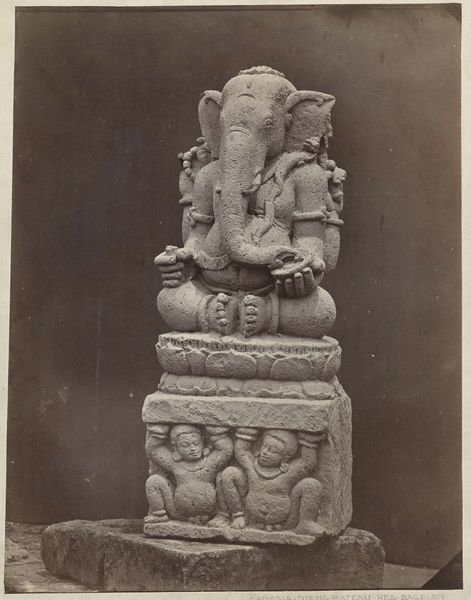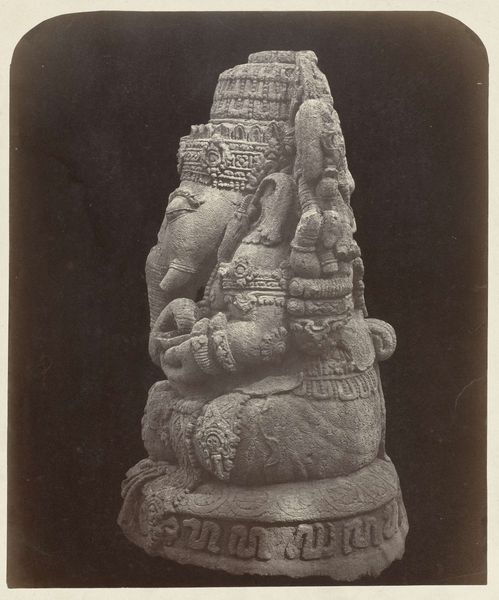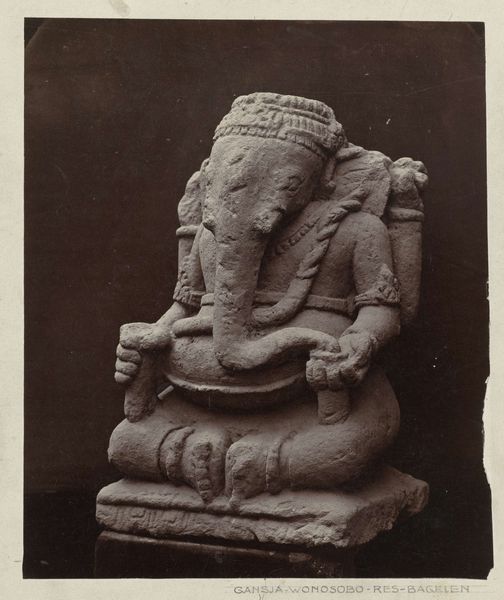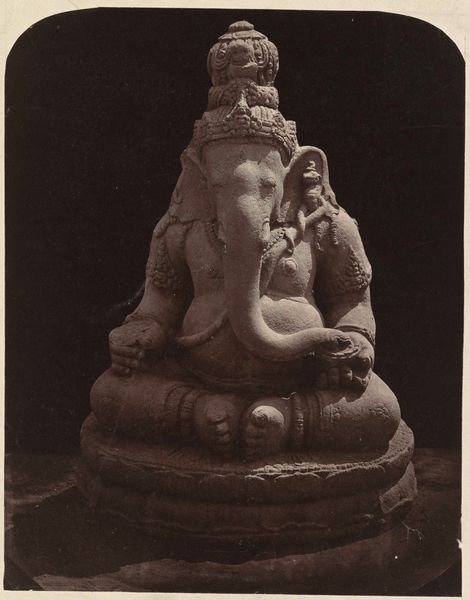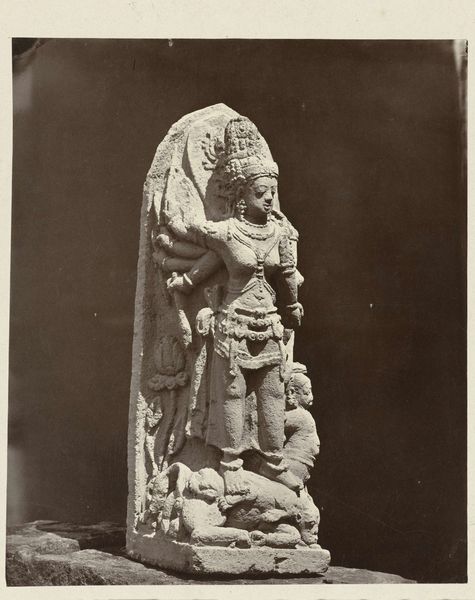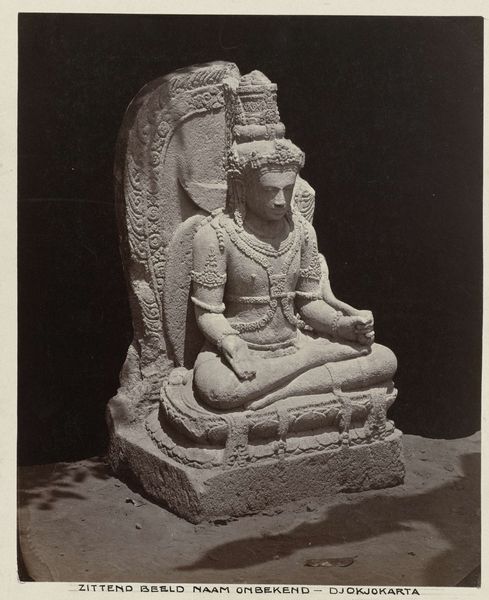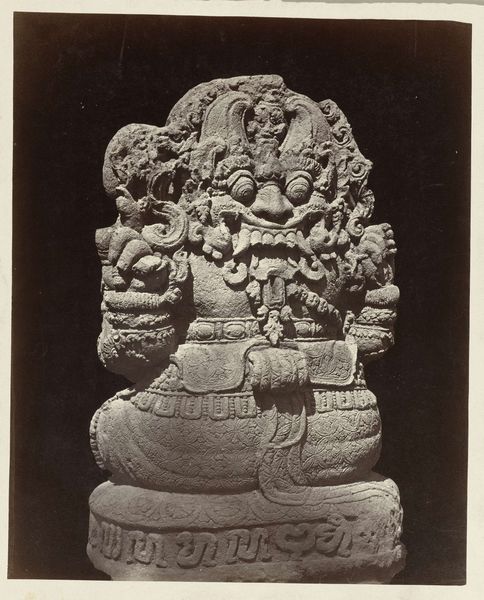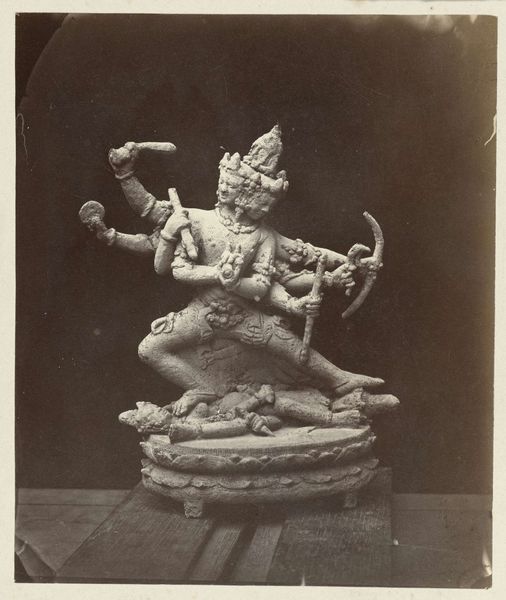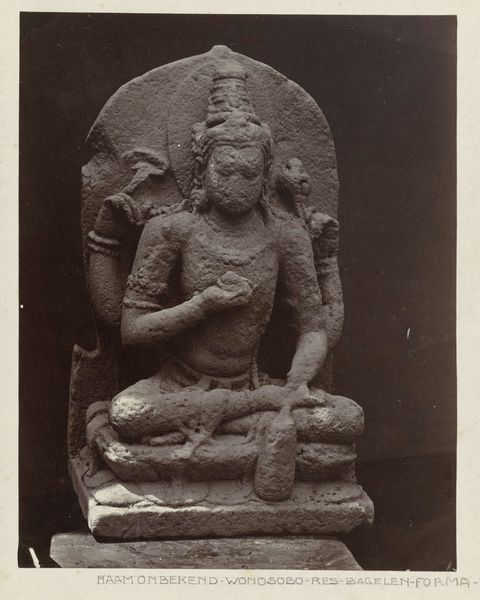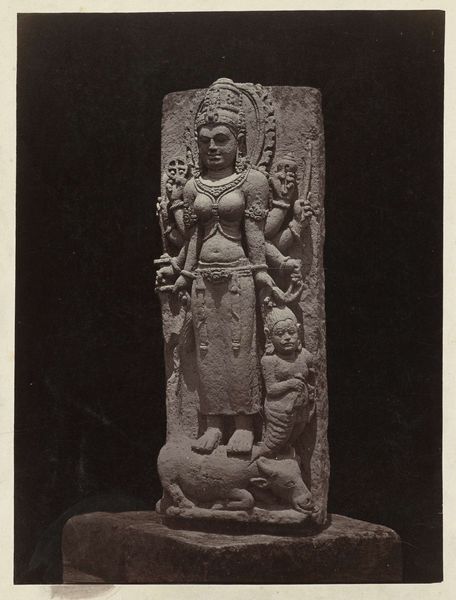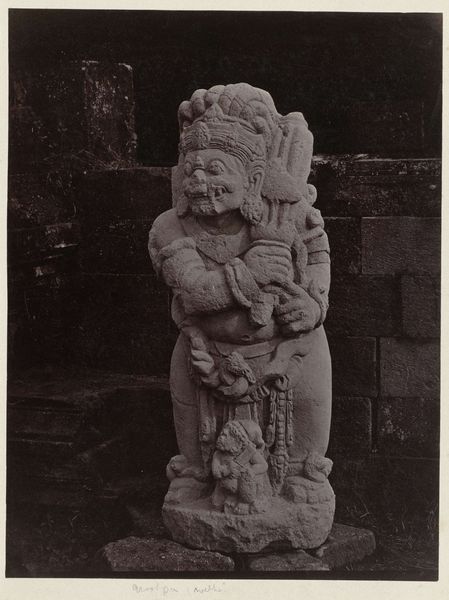
sculpture
#
sculpture
#
asian-art
#
figuration
#
geometric
#
ancient-mediterranean
#
sculpture
Dimensions: height 340 mm, width 290 mm
Copyright: Rijks Museum: Open Domain
Curator: Take a moment to observe "Four-armed Ganesha", a photograph likely captured between 1867 and 1868 by Isidore Kinsbergen. Editor: My first thought is one of complex authority, that weathered stone texture combined with the multiple limbs exudes presence and power. Curator: Absolutely. Ganesha, the elephant-headed deity, embodies wisdom, intellect, and new beginnings. Kinsbergen's photograph captures more than just an image; it encapsulates the historical narrative of colonial encounters and the burgeoning field of anthropological study in the mid-19th century. Editor: The image of Ganesha, the remover of obstacles, is itself interesting given it's now part of the context of colonial cultural consumption. What sort of visual symbolism speaks most prominently? Curator: For me, it's the gesture of the hands. Two hold objects, another appears to bless, and the final cradles what appears to be a sweet delicacy, signifying abundance and prosperity. What could be a display of power can also be seen as a welcoming hand. Editor: Yes, those hands reveal a deeper intention, communicating offerings and goodwill. Looking at the details of the elephants and skulls depicted in the lower part, do they play a more subtle and indirect cultural symbolism here? Curator: Perhaps, in that those supporting symbols underscore themes of creation, destruction, and rebirth that frequently intersect with our understanding of Ganesha in broader socio-religious contexts. In any case, it emphasizes the intricate symbolism and how layered historical meanings inform this single representation of the deity. Editor: Precisely, a cultural web as dense and durable as the stone it’s carved from, I think it reveals a timeless image made newly complex when considered alongside its history of distribution. Curator: Considering both historical and visual factors opens further the image's possibilities and potential as a catalyst for discussing ancient origins in dialogue with more recent cross-cultural dynamics. Editor: And, finally, considering how the symbols presented carry profound meaning, and a greater appreciation for cultural exchange becomes accessible to any curious viewer.
Comments
rijksmuseum about 2 years ago
⋮
Kinsbergen not only photographed temples and other historical buildings, but also took close-ups of sculptures. This Hindu statue of the god Ganesha with an elephant’s head was found near Blitar on East Java. The god eats from a skull, and the base on which he sits is also surrounded by skulls. This expresses his power over death.
Join the conversation
Join millions of artists and users on Artera today and experience the ultimate creative platform.
